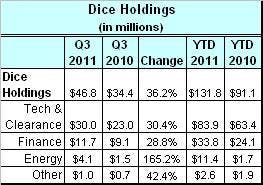Billy Beane, the Oakland A’s General Manager, described in Moneyball the need to rethink his team’s business (baseball) and make a scientific investigation of the sport by determining what qualities in an athlete converted into wins or baseball advantage.
HR leaders have a very similar opportunity in front of them today. HR analytics, if properly employed, can dramatically impact the bottom-line performance of an organization in multiple direct and indirect ways.
There are several things to keep in mind for those contemplating making HR analytics a focus for their organization:
1. It’s not about data — it’s ALL about insight
Google was able to improve the performance of their organization because they were able to correlate specific management competencies with engineering productivity. I’m sure that data had existed at Google for quite some time in both the area of management competencies and engineering output. It was only when these two data sets were married in a statistically valid manner that insight was gained.
Having valid data is critical; having the ability to view this data in ways that help to make the organization more productive is potentially transformational. There are several organizations that are well on their way with this work. Organizations that are just stepping into the fray have a huge advantage.
Take the time to study benchmark companies. Adopt and adapt their practices — and get your home run.
2. “Fuzzy math” is not an option
Unless the goal of your HR analytics program is to provide directionally correct, but not statistically valid data, your analysis must be beyond reproach.
In the initial stages of this work the output and recommendations will be highly scrutinized. Skepticism will be high. The best way to move quickly through this phase is to produce and present statistically valid data.
Having the right skills in your organization, either on staff, or on loan from another area (sometimes advantageous from a credibility perspective) is essential. Identify and learn from the third party experts in this area. This includes academics and consultants that specializng in this area. It also includes technology. Utilizing vendors that enable more efficient collection, presentation, and analysis of data can significantly reduce implementation time.
The J&J example provides some visibility into how these systems can be used. Many organizations are now producing balanced scorecards or talent report cards using these systems. While the upfront effort in getting these systems operational is significant, the ability to easily manipulate and correlate data from multiple HR and non-HR systems provides an organization with the ability to fairly easily produce powerful insight.
3. Focus on driving the business
Staples was able to measure, analyze and act against data in a manner that resulted in a substantial increase in same-store sales. They were able to link company strategy, brand, and talent management to produce exceptional results. This outcome is representative of the ultimate goal of HR analytics — to produce insights that enable the business to take a different and better direction.
In the case of Staples, the directional change was massive. In other cases, the change may be more subtle, more of a course correction. In either case, the organization has confidence in the new direction based on the insight provided via solid HR metrics.
Benjamin Franklin once said that “when you’re finished changing, you’re finished.” The insights gained via the successful implementation of an HR analytics initiative lead to more insight, which lead to more insights, and so on. Done well, this effort will result in having an increasingly deeper and more complete understanding of the talent-related drivers of your business.
This is a journey — one that I hope this chapter has helped to make much more exciting and far less daunting.
Excerpted from Elements of Successful Organizations: Achieving Strong Leadership, Smart Management, and an Engaged Workforce from the Workforce Institute at Kronos. Copyright 2011 by Kronos Incorporated. Reprinted with permission from The Workforce Institute at Kronos Incorporated.
